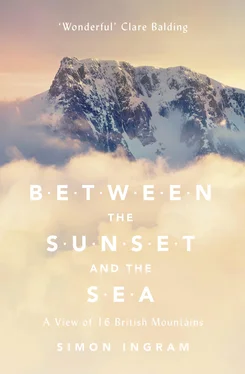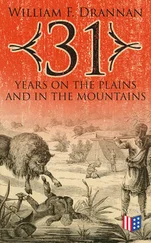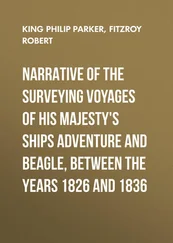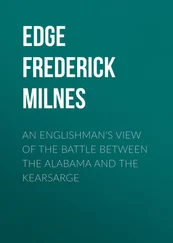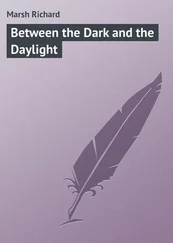Not all hill names are unique, alas. There are several Beinn Deargs, for instance. It means ‘Red Hill’, and it’s a lazy name, about as plain as you can get for a Scottish mountain. Beinn is a typical Scottish Gaelic word for a peak, or hill. The ‘red’ is probably a reference to the way it looks in a certain light at a certain time of day at a certain time of year, although even by these rules the name is a flimsy fit. But no matter; interesting names aren’t always given to interesting mountains, and the reverse is often true. And I knew that this was certainly the case with Beinn Dearg.
I began to feel like there was something amiss with the route I was taking up Beinn Dearg about halfway up the north-west flank. The route through the boulder field had felt familiar, in the manner of a decade-old hunch. But by the time I reached the first crag band at the top of the boulder field, this hunch had gone. I could see a way through this new obstacle: a steepening grassy slope above the drop of the crag, which led diagonally up to a nick in the skyline ahead. What lay beyond it I didn’t know – and to get to it would involve traversing out over steep ground leaning towards an awful, convex drop. If this route didn’t go, I’d have to cross above the drop twice. I didn’t like that idea.
When walking alone, you don’t have anyone to help with uncertainty or share in the decision-making; it’s one of the reasons they tell you not to do it. All the confidence I had was my own, and today I didn’t have much. Shakily, I began to walk towards the nick in the crag ahead. I felt the ground steepen underfoot, and tilt; I swayed my weight accordingly, and kept my eyes fixed forward. I could feel air opening to my right as I moved slowly across the slope. It was only when I reached the rock beyond and took hold of its solidity with a queasy exhale that I realised I’d been holding my breath. Looking through the gap in the crags that had been my goal, I saw more steep ground and a possible zigzag I could take to gain the next band of crags above, which looked like it skirted just to the edge of the drop. It seemed this alarming void was to be my steadily intensifying, inescapable companion for the whole ascent. My eyes searched the ground for comforting signs of human passage: a boot print, piled stones, anything suggesting others had gone this way. Nothing. But perhaps that was how it was all over the mountain. Perhaps this was all part of its challenge.
Satisfied that the route could be reversed if necessary, I continued my upward traverse of the steep ground, cutting back on myself after a dozen steps or so at a higher angle in a zigzag climb, up a skinny vertical corridor ascending the mountain’s side. I didn’t know if I was right. Britain might have great maps, short distances and relatively small mountains, but this was still exploration of the most vital kind – basic, exciting, nerve-wracking exploration with a simple composition: move. Climb. Don’t slip. A fragile, self-balanced pivot between the thrilling and the frightening. Proper adventure, with all the high stakes and uncertainty that this brought: any second I could hit something unpassable. And then, eventually, I did.
On the last section before I met the second band of crags, I came across an overhanging shelf of sandstone. From a distance it looked passable; up close, I could see it wasn’t. It would hang me over the drop I’d delicately been trying to keep at arm’s length all the way up. As I shuffled in indecision, my foot nudged loose a rock the size of a beer coaster. Transfixed, I watched it gather momentum as it bounced down the mountainside in lengthening arcs, before sailing cleanly off the precipice I now stared down. It was the final kick to my resolve. This route was going nowhere. The map was no use; I was in the nitty-gritty muddle of the face, a place the cartographer had detailed with missing contour lines and stippled crag decals – fair warning of steep and difficult terrain I should probably have heeded.
As frustrating as all this was, this had been the second reason that Beinn Dearg had appealed to me. One of my memories of climbing it a decade ago was hearing it described by someone as a ‘proper mountain’ – that is to say, not roaded with deep paths punctuated by lines of people, or representative of any kind of soft touch to the hillwalker. To get to the top of it, you needed to earn it. You needed to use your navigation head, be a little bit brave, push on past bits of difficult terrain, and have the resolve to ascend something unrelentingly steep for what seems like hours, as the ground falls mercilessly around you. Beinn Dearg might be a ‘bimble’ to some. To most, however, it’s a test.
I stood for a long moment, looking down the steep fall beneath my feet. There was really no choice. I had to go back. Find another way. Crouched on the slope, I took a few deep breaths and began to descend the way I’d come. I gingerly reversed the zig-zags, re-reached the nick in the rock, then re-crossed the exposed terrace to a grassy platform, where I could rest and reassess.
One other option looked realistic – a shelf of rock that ascended the mountain for a hundred metres or so, with a stony gully beneath it. Midway across the traverse to it, my eyes caught something on the ground. Something faint, but unmistakable: a partial footprint. Someone else had come this way. Whoever this boot print belonged to could have been as indecisive as me, but it was still a comfort to think that I wasn’t completely misguided. As I reached the shelf I took hold of it and climbed it, using the rock as a kind of human-height banister. It was comforting to be closed-in, instead of exposed. It smelled of moss and echoed my breath. I could hear faint trickles of water.
I followed this slowly as it travelled high above another steeply angled slope, then came up against the spine of broken rock of the north-west ridge. The ridge ascended unbroken, right to the top. This was evidently the way the few who climbed Beinn Dearg typically went. After my own failed attempt at route-finding up the face, I decided to join them. Soon the sky opened ahead, and I reached Stùc Loch na Cabhaig, the lower of Beinn Dearg’s two summits.
From here, the mountain becomes a podium. Views open, and the eastern distance hits you with a vision of astonishing depth. There was Beinn Eighe, curled like the rim of an old caldera, brittle quartzite dusting its flanks like fine flour; Baosbheinn and Beinn an Eòin to the north, watchful twins overlooking torpedo-shaped Loch na h-Oidhche between them. And beyond, the watery hinterland of the Flowerdale Forest, a broad place of loch, mountain, bog and bug stretching to the long natural divide of Loch Maree, seven miles to the north. Detail was hazy, but the mountains’ outlines were clear, black shapes in the murk.
My companion in the view all the way up Beinn Dearg to the west was perhaps Torridon’s most distinguished mountain, Beinn Alligin – which, as I’d climbed, had gradually sharpened and shifted from being a huge mass of terraced rock to becoming a shapely, flat-topped cone fluted with dark gullies. With its neat architecture and straight edges it looked as if it had been folded like a steepled napkin. So unique. So charismatic.
The winner in the spectacle stakes, however, didn’t show itself until I made the final walk to Beinn Dearg’s summit. The last stretch to reach it is a bowed whaleback of a ridge, slung like a rickety bridge between the two high points. The most logical line takes you within handshaking distance of the massive drop into Beinn Dearg’s secretive inner valley – the floor of which is drowned by the black waters of Loch a’ Choire Mhòir.
Happily, the only difficulty here was just one move, little more than a long step. There was a drop – but so long as I didn’t dwell on it, only a head appearing from a hole at my feet could startle me into getting it wrong. Soon I was on the other side of the crags. Breathing hard but happy, I began to walk up the final easy slope to the broad summit of Beinn Dearg, beyond which, rising steadily into view, lay one of the great mountain sights of Britain.
Читать дальше
